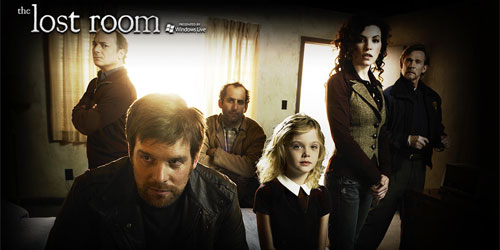I just posted another bit about Second Life a little while ago, and though to myself, “Why are you posting so much about it? You hardly even go there!”
It’s true. I really don’t actually use SL much. I love thinking about it, reading about it, and checking out the occasional amazing build there, but I haven’t found it consistently engaging enough to really spend a lot of time there.
There are several reasons for this, in my case:
1. I don’t especially like socializing there, because I don’t want to go into that sinkhole. I’ve had experiences in my past where a virtual community of one kind or another has drawn me in, and it keeps me disconnected from my present life. Some people are better at balancing this, but not me. And it’s even worse in some ways than an IRC channel or a MOO/MUD situation, because it’s so highly visual. There’s so much to keep track of visually that you can’t take your eyes from the screen, while on IRC or a MOO you can do other things online while ‘hanging’ out with your chat friends. But I don’t even do that anymore. I’ve tried hanging in some friendly spots like the Elbow Room in SL, but after a while it just gets to be so repetitive.
2. I honestly prefer *building* things in virtual places like this. When I messed around more in MUSH and MOO environments, the biggest draw for me was designing stuff, figuring out the kludgy but learnable code, and creating interactive objects, or even just lushly described environments. But even if you didn’t know the code, you could modify others’ objects or make really cool stuff mainly by just describing it in text. It was a collaborative storytelling tool, with real-time “third-place” community as the other killer ingredient. But in Second Life, you can’t just write up something cool and put a bit of code with it and make an enveloping, narrative experience. To do something that effective in SL, you have to understand 3D motion geometry, have a gift for 3D CAD work, and be willing to learn a full fledged programming language (LSL). It’s frustrating to not be able to just create great stuff without having to become a full-time craftsperson. Even the thrill of describing your character (writing your description in a MUSH) is ruined in SL, because you either have to know how to create your own clothes (using very advanced Photoshop techniques, hard to find textures, and 3D modeling skills) or you have to buy the stuff other people make. Which essentially makes it so much like real life, I figure, what’s the point? I learned just enough to make some tattoos and t-shirts, so that I could at least feel like I had a hand in my avatar’s sartorial expression, then I stopped, because it’s not like somebody’s paying me to do this stuff.
3. Which leads me to the last issue. Money. SL has been hyped like mad as all about the money. Which makes it very different from the Web, in many ways… because the Web is about openness, which it has in its DNA, to make a web page, you’ve always been able to just look at someone else’s source. Even now, with AJAX and other technologies making it more complex, the leaders in these techniques (Yahoo, Google) are publishing their source code openly, in the spirit of the Web. Second Life, however, encourages people to keep everything a secret, to lock their source code because they may be able to sell something for a few hundred Lindens. True, on MUDs and such people can lock their objects as well, trying to make some virtual cash in whatever MUD they’re on, and hide the source. But if they really want bragging rights, they know they should make something that works really well and share it with others, because that currency is actually worth more in the long run — social currency. With SL, however, the virtual money is *real* money — because it’s exchangeable with US dollars. Nothing wrong with capitalism, of course, but it’s caused hundreds of people to glom onto SL and turn it into a giant, ugly shopping mall — not a nice one, but one of those nearly-third-world bazaars where you think you’re driving by a giant junk pile but it’s actually stuff for sale. The worst part of this, to me, is that it makes so many people in SL protective and closed, and paranoid, about the stuff they made… and every little bauble someone comes up with is something they think they’re going to get rich by selling.
So… there you go. Does that mean I hate Second Life, like (otherwise very pleasant friend of the IA community) Matt “Blackbelt” Jones and cohorts at http://www.ihatesecondlife.blogspot.com/ ? Well, no. I actually still think it’s fascinating. But only as a sort of initial foray or experiment. I don’t see that SL is the ‘future of the web’ — I believe the real future of the web is in simple, basic interfaces that connect us more easily and cheaply and ubiquitously wherever we happen to be. This is quite the opposite of having to be glued to my desk chair in front of a computer powerful enough to push the software and content streaming from Linden’s servers.
That said, I think SL is a fascinating *archetype* for what that future of ubiquitous, simple, cheap computing is going to be. (As I’ve said in “We Live Here” and other places.) I don’t think it’s taking over the web, but it could very well infect our imaginations. That’s really its key power… that it’s opening thoughts, conversations and possibilities about what else we could do with technology, how richly it can connect us, and what it might feel like to walk around in a world where every object has a unique id and talks to every other object, including us.
It’s also useful in more concentrated, planned ways, as a place where distantly connected people can meet “in the flesh” — there’s an interesting psychological effect that’s different in SL that you don’t get in text chat. The corporeal presence of the other person, even though they may be dressed like a fairy or a robot — it’s just a more exaggerated version of wearing a particular cologne or cool sunglasses, things we do all the time to express ourselves. I’ve been in meetings with people from organizations I’m part of, people whom I rarely or never meet in person, and there’s an intimacy to the conversation when looking around at their avatars and talking that you just don’t get in a text-only experience. Also there’s a sense of “place” that feels more substantial than a mere website — having a presence in Second Life, a company or organization can provide something that expresses “if we had a building you could come and visit to get to know us, this is what it’d be like” and that’s pretty powerful.
That’s why I think Clay Shirkey’s post is kind of missing the point. Shirkey will have plenty of people jumping in to agree or disagree with him, so I won’t go to great lengths.
I’ll just say I think he’s dead right about the hype: Linden is overplaying it. Philip Rosedale has gone on record saying SL is like the new Web, and that it’s like Burning Man… a utopia of which he is the visionary and lord. That’s fun for him, but not so much squared with reality. Linden Labs is a business, and SL is proprietary and limited to a giant warehouse of servers in California. Not quite the open Web of Tim Berners-Lee. And corporate America is having its field day for now, but it’ll wind down soon enough. At this point everyone feels obligated to have at least a kiosk there, just so they don’t look like squares.
But SL or something like it will continue to be there, and will grow, and will likely morph into something much less literal and (as Shirkey puts it) “conceptually simple” and much more a hybrid of walking around in real space + walking around in virtual space + using more efficient interfaces when appropriate for all the things that the virtual/real merged layers present us.




